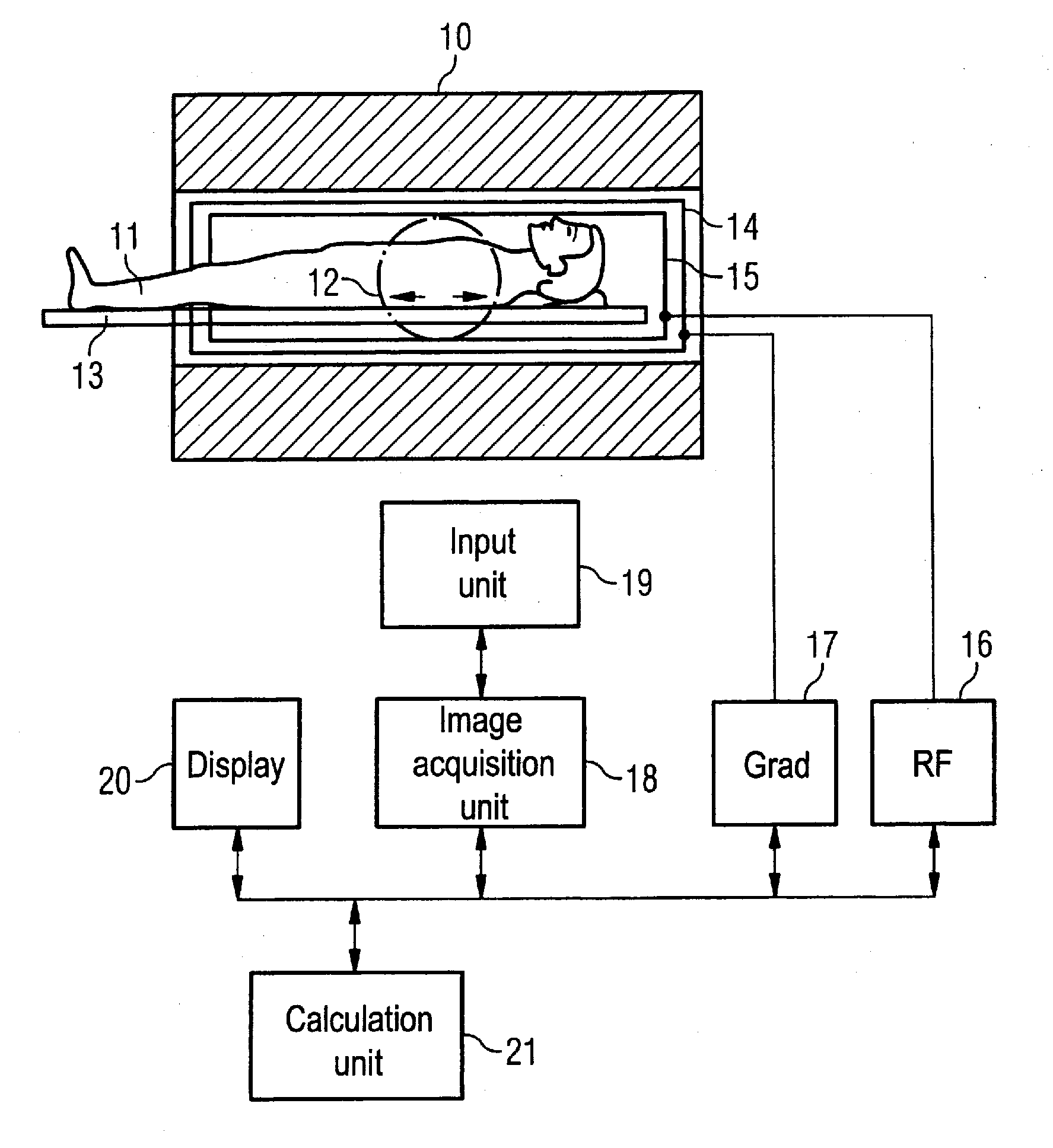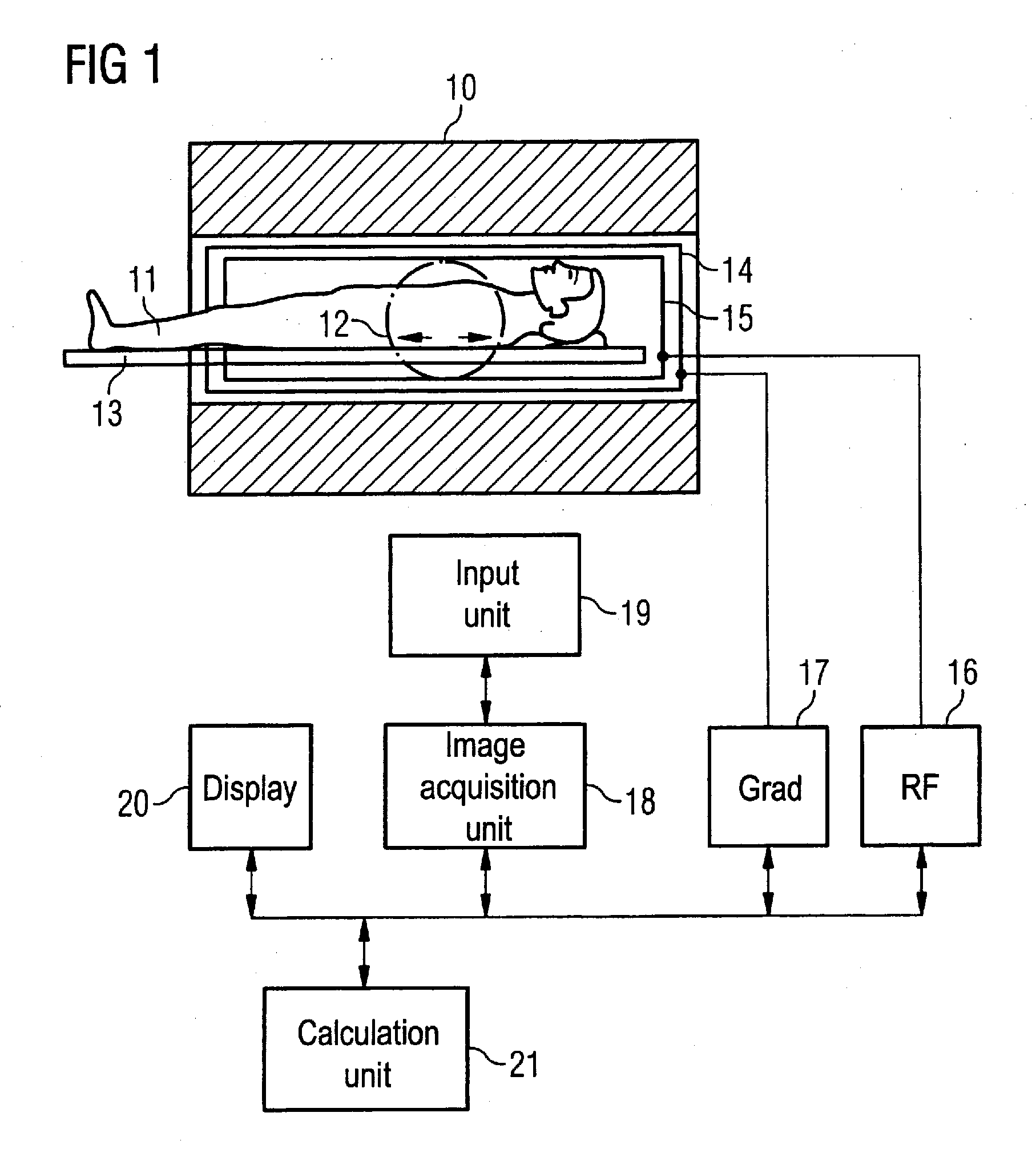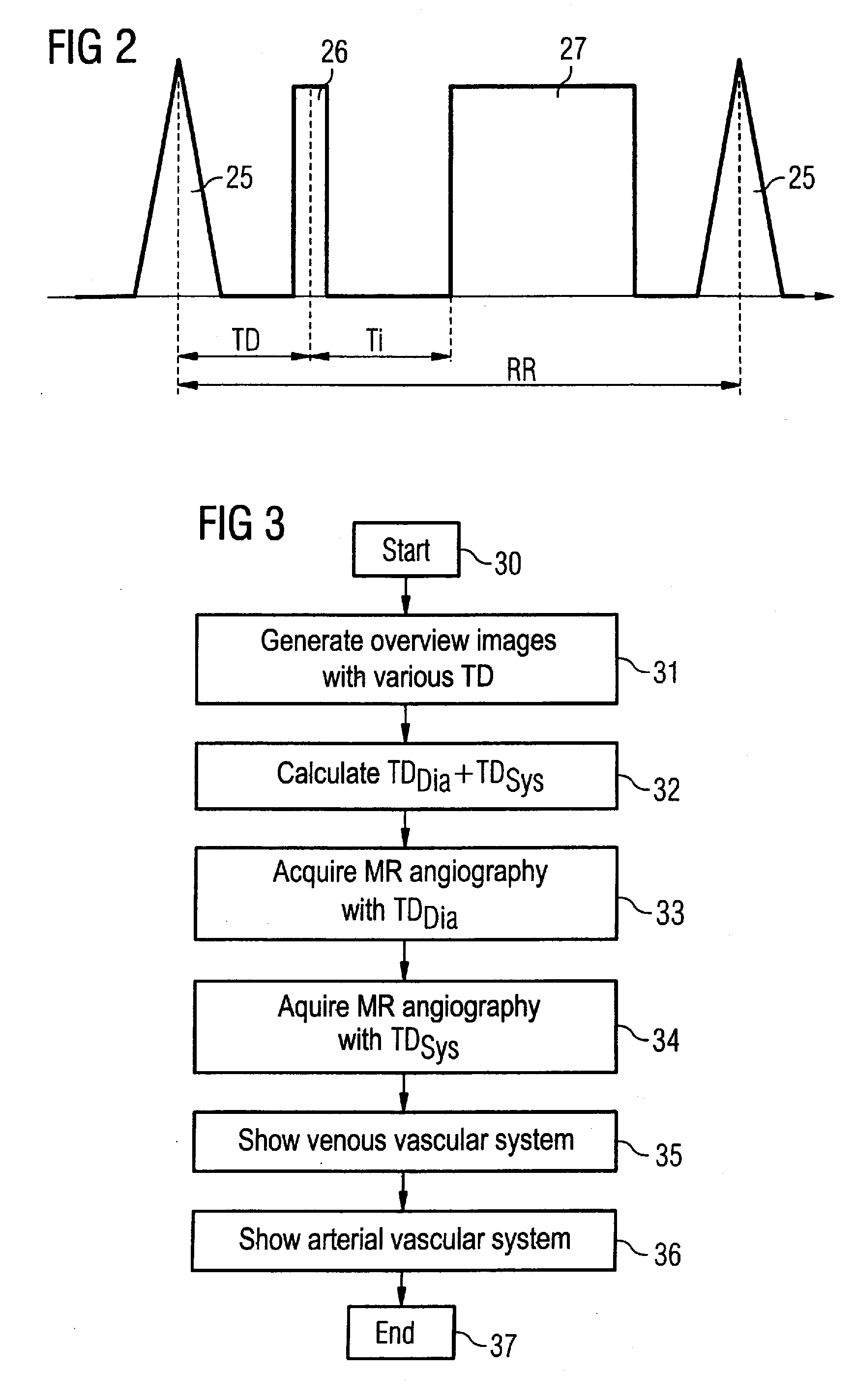Method and magnetic resonance system to optimize mr images
a magnetic resonance and image technology, applied in image enhancement, instruments, applications, etc., can solve the problem of not finding the global optimum in the two-dimensional search region, and achieve the effect of simplifying non-contrast agent-enhanced mr angiography procedures, simple and fast manner
- Summary
- Abstract
- Description
- Claims
- Application Information
AI Technical Summary
Benefits of technology
Problems solved by technology
Method used
Image
Examples
Embodiment Construction
[0029]An MR system with which an imaging parameter can be optimized in a simple manner before conducting an angiographic measurement is schematically presented in FIG. 1. Such an MR system has a magnet 10 for generation of a polarization field B0. An examination subject (here an examination subject 11) is moved on a bed 13 into the magnet 10, as is schematically depicted by the arrows 12. The MR system furthermore has a gradient system 14 for generation of magnetic field gradients that are used for the imaging and spatial coding. To excite spins that are polarized due to the basic magnetic field, a radio-frequency coil arrangement 15 is provided that radiates a radio-frequency field into the examination subject 11 in order to deflect the magnetization from the equilibrium (steady) state. A gradient unit 17 is provided to control the magnetic field gradients and a RF unit 16 is provided to control the radiated RF pulses. An image acquisition unit 18 centrally controls the magnetic re...
PUM
 Login to View More
Login to View More Abstract
Description
Claims
Application Information
 Login to View More
Login to View More - R&D
- Intellectual Property
- Life Sciences
- Materials
- Tech Scout
- Unparalleled Data Quality
- Higher Quality Content
- 60% Fewer Hallucinations
Browse by: Latest US Patents, China's latest patents, Technical Efficacy Thesaurus, Application Domain, Technology Topic, Popular Technical Reports.
© 2025 PatSnap. All rights reserved.Legal|Privacy policy|Modern Slavery Act Transparency Statement|Sitemap|About US| Contact US: help@patsnap.com



